In the third and fourth issue of Haleigh Buck’s I Feel Weird series she mixes grim and grotesque humor with achingly honest confession to depict the challenges of her depression and anxiety. Addressing the problem on both a personal and historical level, Buck opens the reader’s hearts to her plight and their minds to the thorny realities of psychotherapy. All these tones and approaches are stitched together by Buck’s ability to rapidly shift her imagery from the comically gruesome to the tragically mundane, allowing her to cover an expanse of difficult emotional ground and complex history in a way that will linger with the reader.
Buck pulls no punches in setting the tone of I Feel Weird by opening up the third issue with a single image of herself at her drawing desk with a noose dangling behind her. There is a look of tired resignation on Haleigh’s face as looks directly at the reader and says she is “ok now,” and that, “I don’t want to stay here anymore. I want to come back.” This desire to return from darkness prefigures the main narrative thread of both issues wherein Buck recounts her experiences in psychotherapy following a complete mental breakdown and suicide attempt.
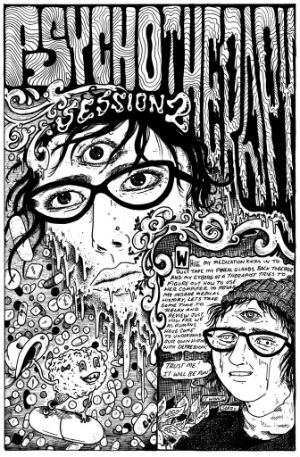 In trying to relate her struggle with seeking treatment for her depression to the reader, in the third issue Buck gives us a tragi-comic abridged history of mankind’s repeated failed attempts to understand and aid the mentally ill. Deftly boiling down centuries of information into digestible chunks, this history is presented to us by a pipe smoking sentient brain sporting a mortarboard. Meanwhile, quack physicians and an emaciated demon force various darkly comedic tortures in the guise of treatment upon a time period appropriate Haleigh. Buck’s dense hatching and liberal use of heavy blacks adds a gravity to the proceedings that balances nicely with the snarky commentary coming from her disheveled avatar. Buck repeats this structure in the fourth issue, but this time turning her attention to the history of medications used to treat mental illness. As giant anthropomorphic pills drag Haleigh around by her ankles to participate in a carnival of torments, she is consistently drawn in her underwear, reinforcing her vulnerability at the hands of mental health practitioners.
In trying to relate her struggle with seeking treatment for her depression to the reader, in the third issue Buck gives us a tragi-comic abridged history of mankind’s repeated failed attempts to understand and aid the mentally ill. Deftly boiling down centuries of information into digestible chunks, this history is presented to us by a pipe smoking sentient brain sporting a mortarboard. Meanwhile, quack physicians and an emaciated demon force various darkly comedic tortures in the guise of treatment upon a time period appropriate Haleigh. Buck’s dense hatching and liberal use of heavy blacks adds a gravity to the proceedings that balances nicely with the snarky commentary coming from her disheveled avatar. Buck repeats this structure in the fourth issue, but this time turning her attention to the history of medications used to treat mental illness. As giant anthropomorphic pills drag Haleigh around by her ankles to participate in a carnival of torments, she is consistently drawn in her underwear, reinforcing her vulnerability at the hands of mental health practitioners.
In both issues, at the top of the page, running parallel to the history lessons are scenes of the real world Haleigh in therapy bashing up against many of the same walls that impede the treatment of the mentally ill in the lower section. In contrast, these therapy scenes are played completely straight. Juxtaposing the emotional hyperbole of the lower portion of the page with the drudgery of her lived experience seeking treatment. Haleigh’s inner turmoil eventually boils over after her therapist recommends yoga and prayer as cure-alls for her depression. Yet, in finally telling of her ineffectual therapists we see Haleigh have a rare moment of cathartic happiness.
Throughout both issues Buck continues to find solace and humor in confronting the darkness in her life. One vignette has Haleigh making a game of her and her roommate blurting out what their eventual tombstone will be. In another sequence an anxiety attack brought on by decision paralysis at the grocery is presented in the style of a Ken Burn’s The Civil War-esque overwrought letter from Haleigh to her dog. Warping the awfulness of an anxiety attack to such a ludicrous degree that we can’t help but laugh as the EMTs cart a blathering Haleigh in an ambulance and her dog later reads her letter inside his stately manor. An equally strong example of Buck turning tragedy into genuine comedy is a sequence in which she transforms her fear of people worriedly confronting her about her mental health post-suicide attempt into a blobby-eyed ghost that follows her wherever she goes. Wringing humor from the absurdity that even in their heartfelt concern, people can still be annoying and awful when they step all over your boundaries.
While both issues showcase Buck’s penchant for intensely detailed drawings, the fourth issue in particular showcases a real uptick in her cartooning. She still intricately draws every pill in an army of anthropomorphic pills, every rollercoaster bolt, every loaf of bread on a store shelf, but in the fourth issue the rendering become more fluid and kinetic. Within the static framing of a locked down camera facing Haleigh sitting in a chair during therapy, Buck makes her cartoon self effortlessly twist and turn with life, then warp from human to hunched dragon creature and back again. Her avatar flits and writhes through a tangle of brainstems and antidepressants all the while contorting her facial expressions into the heights of agony and ecstasy. For as powerfully as Buck conveys the emotionality of her scenes through her grotesque drawings, by leaning into cartoonish absurdity she further disarms the reader allowing them to better empathize with her. The reader might not share Buck’s condition, they can easily relate to the seesawing of emotions that comes from just trying to navigate modern existence.
Buck has been working away at I Feel Weird for a few years now, but these most recent issues demonstrate a huge leap in her abilities as a cartoonist. Few artists could so pitch perfectly tackle the subject matter she takes on while balancing the storytelling devices she is employing. There is a profound confidence in every artistic decision being put on the page here and despite the subject matter a real joy evident in every line put to the page. It is this confidence and joy in the face of such darkness that lets the reader walk away from these issues with a greater sympathy not only for Buck, but for all who suffer with similar depression and anxiety.
Haleigh Buck (W/A) • Atomic Books / Self Published, $5.00 / $7.00
Review by Robin Enrico





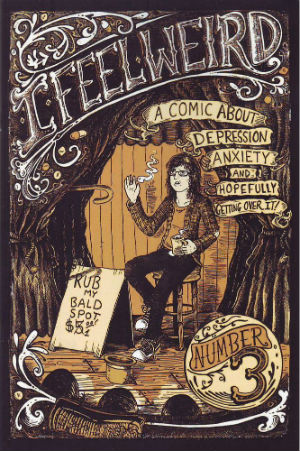
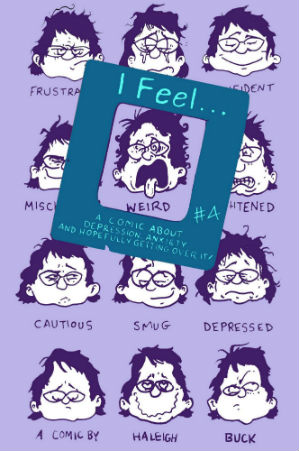
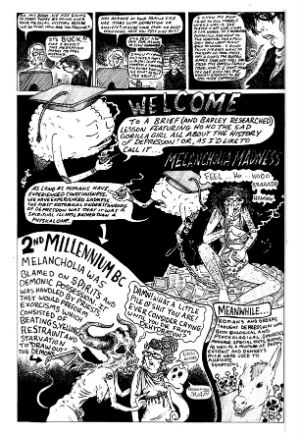
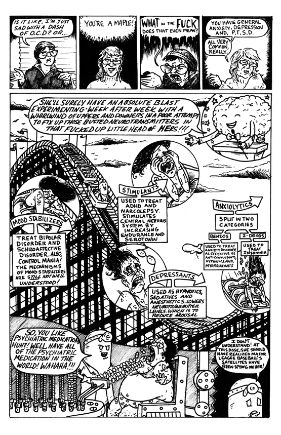
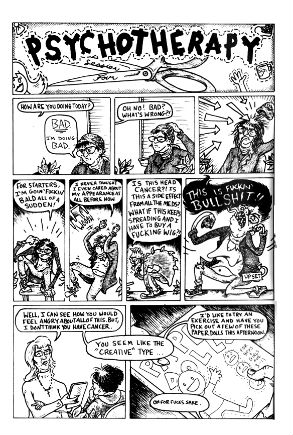
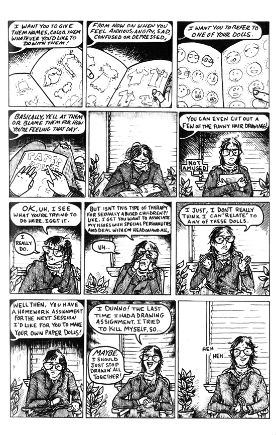
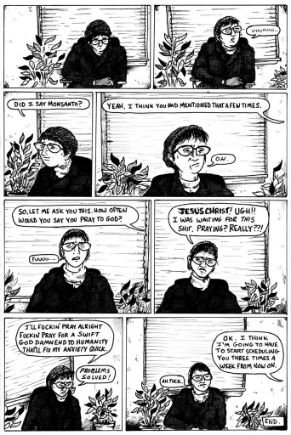
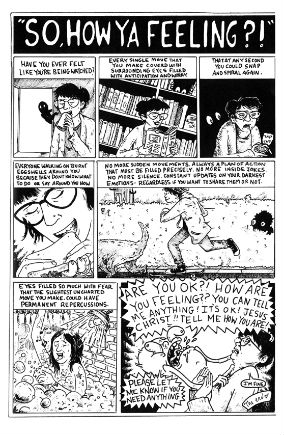
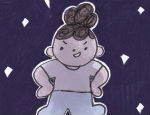
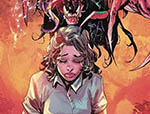
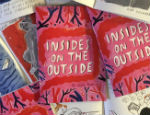
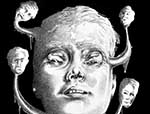



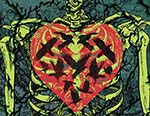

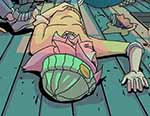
[…] post I Feel Weird #3 and 4 – Haleigh Buck’s Account of Living with Depression and Anxiety Opens the R… appeared first on Broken […]